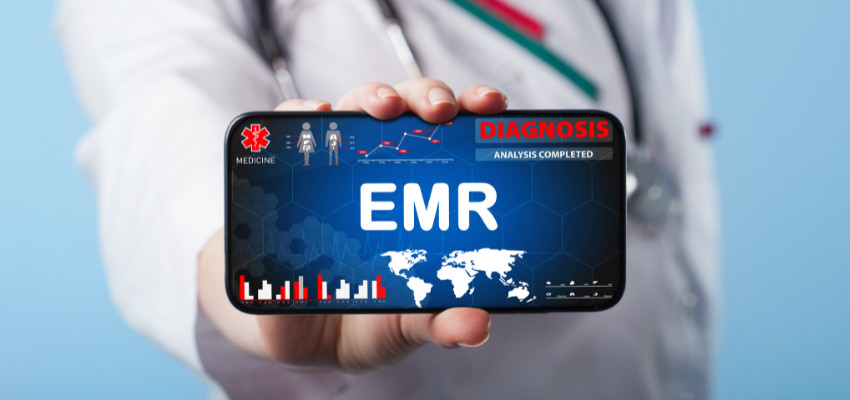Show:
Top 3 Essential Features Every eLearning Platform Must Have in 2025
Revenue from online education is expected to reach $203.81 billion this year, as more people discover the value of remote learning. Online learning is the fastest-growing market in the education industry, rising 900% since 2000.

Globally, 49% of students have had some form of online education and 70% of them prefer it over a traditional classroom setting. Working students could easily get a professional resume filled with degrees they earned through online classes without having to give up their jobs.
Because of the continued interest in online education, e-learning platforms must be equipped to offer essential features learners need to receive the full benefits of this medium. Read on to discover the top 3 features every platform should have to enhance students’ online learning experience in 2025.
Personalized Learning through AI
eLearning platforms can harness AI algorithms and data-driven insights to customize learning tools, create unique learning paths, and recommend tailored content based on students’ strengths, weaknesses, goals, pace, and style.
- Adaptive learning – AI analyzes students’ performance and adjusts the material accordingly. Students who struggle with their lessons can be given additional resources to help them understand the concepts. Those who learn fast, on the other hand, can be given more challenging tests or exercises to further hone their skills.
- Personalized goal setting – Schools and alternative education facilities can give students a skill assessment exam to identify their current knowledge level of a course. The eLearning platform can design a personalized learning plan with specific goals, which they can track along the way.
- Custom content recommendations – eLearning platforms can curate courses, articles, videos, or quizzes that align with the student’s interests and passion. This helps sustain the learner’s attention and allows them to enjoy the learning journey.
- Pace-based lessons – Platforms should offer flexibility in the methods and frequency of learning. They should provide access to self-paced modules, microlearning sessions, or scheduled reminders.
- Different learning styles – Some students are more attentive in watching videos; others prefer the depth of books. Platforms must be able to offer multiple content formats delivered in the students’ preferred style and device.

Immersive Technologies
In this gaming era, schools and learning centers can never go wrong with using technology to create a more powerful and engaging learning environment. Augmented Reality (AR), Virtual Reality (VR), and interactive simulations are must-haves for e-learning platforms. They enhance engagement, retain knowledge better, bring down complex concepts to an understandable level, and encourage learning among the young.
- Augmented Reality (AR) – Similar to how resume writing packages enhance the recruitment experience, AR in education overlays digital content onto the real world, providing interactive, contextual learning experiences. This is most useful when teaching abstract concepts or scientific ideas that may be difficult to visualize. Imagine if a student could simply point their smartphones at a textbook and be able to see 3D models of molecules or 3D versions of historical landmarks.
- Virtual Reality (VR) – VR creates simulated environments for students, making complex subjects more tangible and engaging for them. For example, a virtual operating room would be helpful to medical students who need to practice surgeries without using cadavers or live people. Architectural students who need to envision their design would benefit from walking through a 3D model of it and anticipating potential problems. VR lets students experience their lessons rather than just listen to them from a lecture or read about them.
- Mixed Reality (MR) – MR is a combination of AR and VR, enabling students to work on both the digital and the real aspects of the lessons. For instance, chemistry classes can create virtual lab experiments where real lab equipment can be used and students can open information sources about a chemical element. It removes the barriers that prevent learners from knowing more in a real-life lab because of potential dangers.
- Simulation – Simulations are replicas of real-world scenarios that allow students to work on situations familiar to them, without the potential permanent dangers present in real-life scenarios. They can let go of their cautiousness and fear in experimenting. Simulated environments for learning are growing and they have been used a lot in training by emergency responders, healthcare workers, firefighting volunteers, and pilots.

Mobile-Responsive Interface
Mobile learning apps are not just about shrinking educational content for small screens. They also allow students to learn anywhere they want anytime they want. It brings a higher level of flexibility and personalization into the learning journey. Gone are the days when people are limited in their learning opportunities by location, distance, and time. Every e-learning platform must be accessible on mobile devices and have a convenient user interface for any screen size and type.
.
- Mobile-first design – Mobile responsiveness means designing and creating modules and learning tools specifically for mobile devices and apps, as opposed to simply adjusting desktop layouts to fit mobile screens. Content must be adjustable to various screen sizes without cropping any portions, and must have simple menus, user-friendly buttons, and easy navigation.
- Dedicated mobile apps – Schools and learning facilities should have mobile apps for their e-learning platforms instead of just a centralized website accessible to both desktop and mobile devices. Apps offer a different set of features, including:
- Push notifications for deadline reminders, live sessions, and new lessons uploaded
- Offline access to educational content when internet connectivity is down, and
- Syncing across devices if students use more than one device for studying
- Microlearning modules – Mobile platforms are ideal mediums for bite-sized lessons students can consume at their preferred time; for instance, while commuting to school, having a break, or resting at home. These include quick quizzes, 5 to 10-minute videos, or what you’d call just-in-time (JIT) learning. JITs give students instant access to resources for FAQs and skill refreshers.
These are the major features every e-learning platform must have to increase interest and engagement in education. Continuous innovation is highly recommended to make these platforms adaptable to the ever-changing demands of digital education.

 Return to Previous Page
Return to Previous Page








